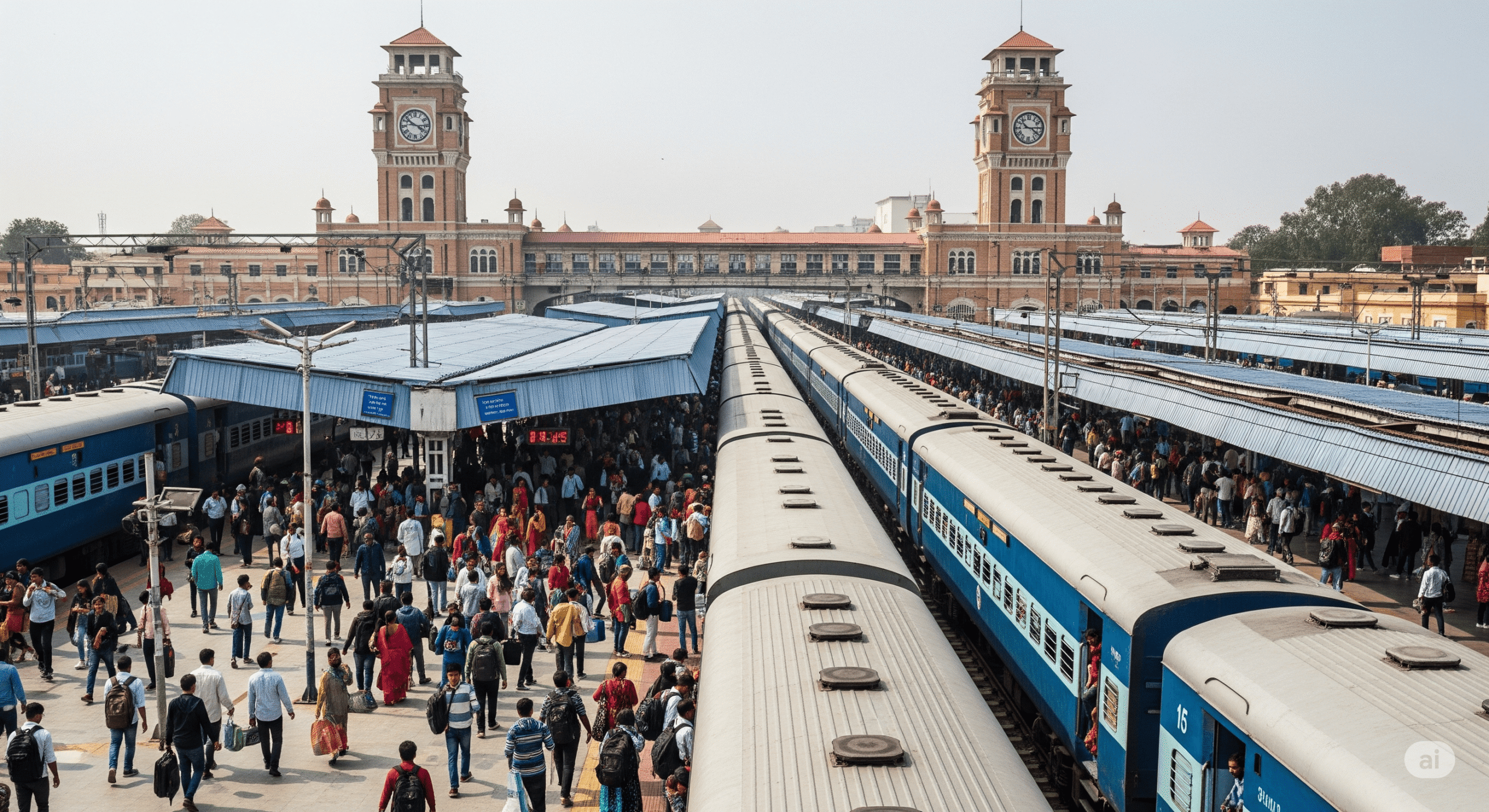Gorakhpur, a city steeped in spiritual and historical significance, boasts a vital artery that connects it to the length and breadth of India: Gorakhpur Junction Railway Station (GKP). More than just a transit point, GKP is a bustling hub that reflects the pulse of this vibrant region, holding distinctions that make it a fascinating subject for any traveler or rail enthusiast.
A Historic Landmark and Divisional Headquarters: Gorakhpur Junction Railway Station
Established in 1890 and formally opened in 1930, Gorakhpur Junction has a long and storied history. It serves as the headquarters of the North Eastern Railway (NER), one of the 18 railway zones of Indian Railways. This strategic position makes it a crucial administrative and operational center, influencing rail traffic across a vast area extending from western Uttar Pradesh to eastern Uttar Pradesh and parts of western Bihar. Its importance lies not just in passenger movement but also in its role as a key transit zone for goods, particularly food grains, playing a vital part in the nation’s food security.
World’s Second Longest Platform and Modern Facilities: Gorakhpur Junction Railway Station
One of the most remarkable features of Gorakhpur Junction is its platform, which holds the record for the world’s second-longest railway platform, measuring an impressive 1,366.33 meters (4,482.7 ft). This engineering marvel was a result of a major remodeling project completed in 2013, solidifying its place on the global railway map.
Beyond its record-breaking length, Gorakhpur Junction is classified as a Class A+ railway station, indicating its high standards and extensive facilities for passengers. These include:
- Multiple Platforms: With 10 well-maintained platforms, the station efficiently manages a high volume of trains daily, accommodating both originating and terminating services, as well as numerous halting trains.
- Passenger Amenities: Travelers can find comfortable waiting rooms, clean restrooms, diverse food stalls offering local and general cuisine, ATMs, and inquiry counters.
- Connectivity: The station is well-connected to various parts of Gorakhpur city and the state via readily available local transport options like auto-rickshaws and taxis. Parking facilities are also available for private vehicles.
- Accessibility: Efforts have been made to ensure good accessibility for all passengers, with provisions for escalators and other assistance where needed.
A Hub for Pilgrims and Tourists: Gorakhpur Junction Railway Station
Gorakhpur Junction is a gateway for countless pilgrims heading to the renowned Gorakhnath Temple, a major Hindu pilgrimage site, and also to Kushinagar, an important Buddhist pilgrimage site where Lord Buddha attained Mahaparinirvana. Tourists also pass through to explore the serene Ramgarhtal Lake and other local attractions. The station’s robust connectivity makes it a convenient starting point for exploring the spiritual and cultural landscape of the region.
Gorakhpur Junction Railway Station: A Symbol of Progress
Over the decades, Gorakhpur Junction has evolved from a historical outpost to a modern railway complex, continuously adapting to the growing demands of Indian Railways. Its ongoing development underscores its commitment to providing efficient and comfortable travel experiences for millions of passengers annually. Whether you’re a local commuter, a pilgrim, or a curious traveler, Gorakhpur Junction stands as a testament to India’s expansive and dynamic railway network.
Frequently Asked Questions (FAQ) about Gorakhpur Junction Railway Station
Q1: What is the station code for Gorakhpur Junction?
A1: The station code for Gorakhpur Junction is GKP.
Q2: How many platforms does Gorakhpur Junction have?
A2: Gorakhpur Junction has 10 platforms.
Q3: What is special about Gorakhpur Junction’s platform?
A3: Gorakhpur Junction boasts the world’s second-longest railway platform, measuring 1,366.33 meters (approximately 4,482.7 feet).
Q4: Which railway zone is Gorakhpur Junction the headquarters of?
A4: It is the headquarters of the North Eastern Railway (NER) zone of Indian Railways.
Q5: What kind of facilities are available at Gorakhpur Junction?
A5: Gorakhpur Junction offers a wide range of facilities, including waiting rooms, clean restrooms, food stalls, ATMs, inquiry counters, parcel services, and good connectivity to local transport.
Q6: How many trains pass through Gorakhpur Junction daily?
A6: Approximately 190-200 trains pass through Gorakhpur Junction daily, with the number increasing on special occasions.
Q7: Is there parking available at Gorakhpur Junction?
A7: Yes, parking facilities are available at Gorakhpur Junction.
Q8: What are some major cities connected by direct trains from Gorakhpur Junction?
A8: Gorakhpur Junction has direct connectivity to major cities like Delhi, Mumbai, Lucknow, Kolkata, Varanasi, Patna, and several others across India.
Q9: Are there retiring rooms available at Gorakhpur Junction?
A9: Yes, retiring rooms managed by IRCTC are generally available at major stations like Gorakhpur Junction for passengers to rest. You can check the IRCTC Retiring Room website for booking and availability.
Q10: What are some nearby attractions to Gorakhpur Junction Railway Station?
A10: Nearby attractions include the Gorakhnath Temple, Ramgarhtal Lake, Kushinagar (a bit further but easily accessible), and various local parks and markets.
“Hope you like Gorakhpur Junction Railway Station Post“
